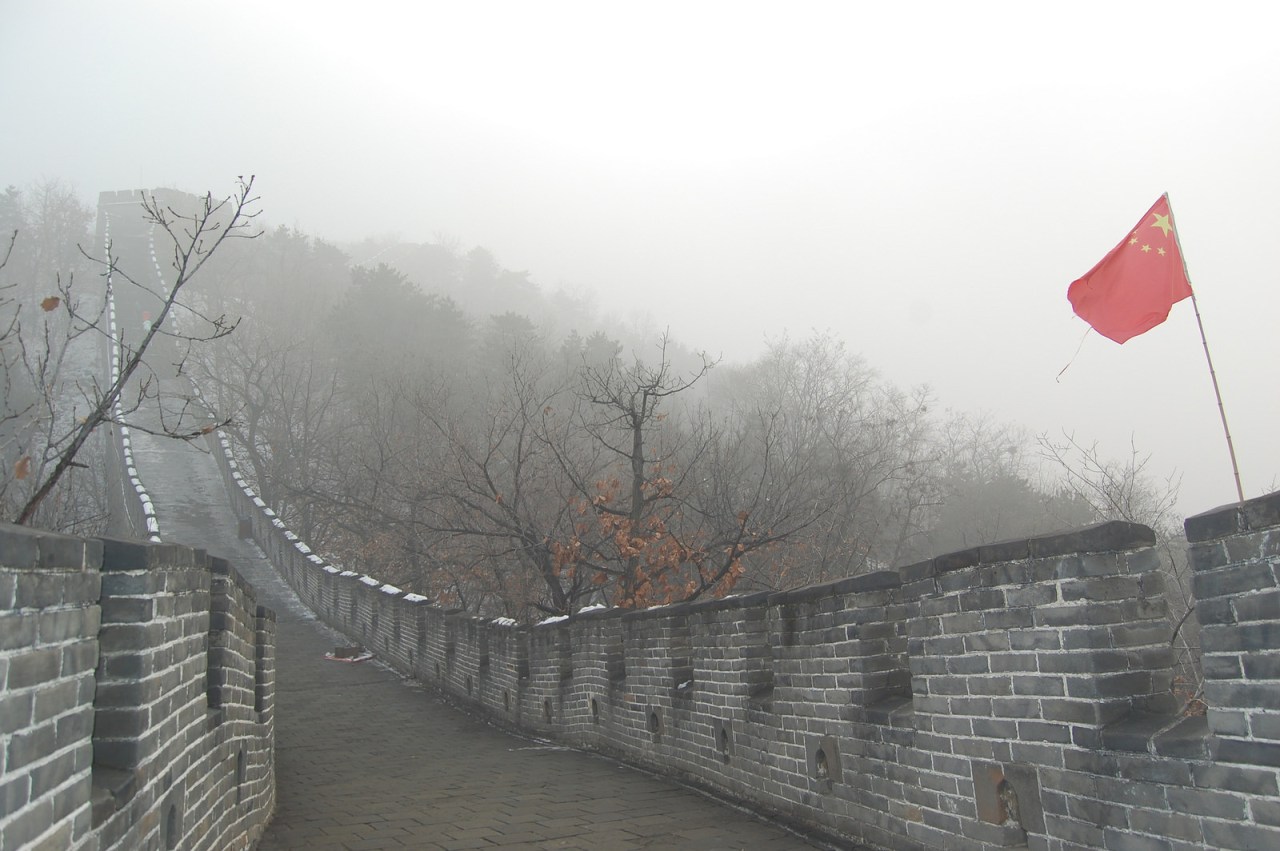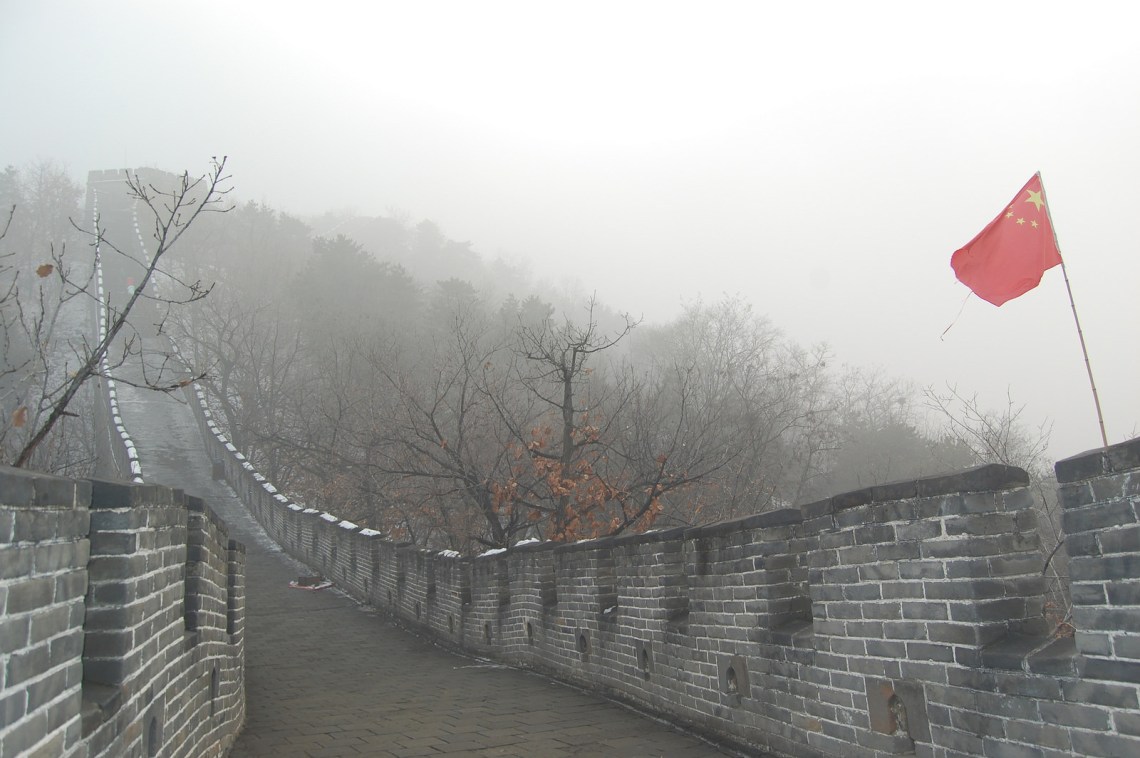
10 Facts About China’s Pollution Problem That Will Make Your Skin Crawl
Take a closer look at some of the products around your home and it won’t be long before you see a “Made in China” label.
By ![]() James Halpin
James Halpin

Take a closer look at some of the products around your home and it won’t be long before you see a “Made in China” label. Ironically enough, the Sony headphones I have on while typing this were made in China; as was the computer I’m typing on (well, technically it was assembled there, but you get the idea). China is experiencing a kind of industrial golden age at the moment, and it’s coming with a heavy price.
In exchange for their “hard-hitting” westernization, China has created one of the worst pollution problems in human history. While many people outside of the country remain blissfully unaware of the problem, Chinese citizens unfortunately don’t have such a luxury.
Here are 10 disturbing facts about environmental pollution in China that will help put into perspective just how bad it actually is.
10. A shockingly low number of Chinese cities meet the country’s air quality standards.
Nearly every city is polluted in some way, shape, or form, but much of that pollution pales in comparison to what is going on in China; particularly when it comes to airborne pollution. The country’s Ministry Of Environmental Protection measured air quality in 70 different cities, and found that only 8 of them met the proper standards. I imagine the next item on our list probably has something to do with that.
9. Hazardous plumes of smog fill the air and interrupt daily life.
Thanks to widespread reckless industrialization, a heavy dependence on coal energy, and a booming automobile industry, China produces more than its fair share of greenhouse gas emissions. In many areas, thick clouds of chemical smog fill the air — countless tiny poisonous particles float around, and some of them inevitably end up in people’s lungs.
This particle pollution, often called “Particulate Matter” (or PM2.5) is a major contributor to the health problems that plague many citizens in bigger cities like Beijing for example. While The World Health Organization estimates a safe concentration of PM2.5 to be no more than 25 micrograms per cubic meter, Beijing’s PM2.5 levels have at times exceeded 600 micrograms per cubic meter. In several neighborhoods outside of the city PM2.5 levels have reached a mind-blowing 900 micrograms per cubic meter. That’s 36 times the acceptable limit! On Dec. 7th, 2015, Chinese government officials issued a “red alert” due to poor air quality. The air in Beijing was actually so bad that schools were ordered closed, outdoor construction was halted, and driving was constricted. Chemical smog is obviously a big problem over there, quite literally.
8. China’s air pollution is visible from outer space.
Chinese pilots will soon be required to learn the use of auto-landing technology in order to avoid having to frequently divert landings because of visibility issues. Interestingly enough, in spite of the visibility problems within Earth’s atmosphere, the massive cloud of smog can be seen on satellite images taken from space. Unfortunately, visibility problems are shaping up to be the least of their worries.
7. Air-borne particle pollution is giving rise to unique health complications.
Foreigners that relocate to China have a particularly hard time adjusting to the poor air quality there. They frequently experience headaches, throat irritation, and a bothersome cough; this phenomenon has unofficially been dubbed “Beijing cough”. Soon enough, we may not even need to visit China ourselves to be affected by their poor air quality.
6. China’s air pollution drifts to the Unites States.
Thanks to improved environmental practices and technological advancements made over the past few decades, greenhouse gas emissions have decreased significantly in many industrialized nations. China’s greenhouse gas emissions on the other hand have increased significantly; offsetting much of the progress made on our end. Remarkably enough, a small percentage of the atmospheric pollution in China actually ends up in California. Jessica Neu, A researcher who participated in a long-term study of the changes in air pollution along California’s coast, stated: “The impact of Chinese pollution on the West Coast over the six years we looked at it was relatively small, but the future impact of Chinese emissions is highly uncertain.” In a country that shows little sign of slowing their roll anytime soon, this could get exponentially worse before it gets better. Worse yet: the air pollution is only one aspect of much bigger problem.
5. Over half of China’s groundwater has been deemed unsafe.
In addition to the complicated air pollution problem, there is a huge amount of pollution getting into China’s water supply — not just in rivers, ponds, and lakes but in the underground water as well. Chinese government officials recently monitored the ground water at thousands of sites across the country; finding nearly 60% of the samples to be “relatively polluted” or “highly polluted”. This is from a relatively short period of industrialization. It’s fair to assume that if the current trajectory continues for any considerable length of time, there won’t be any clean water left at all. While harmful to fishermen and the human population in general, I can’t help but think about all the wildlife that are being forced to pay the ultimate price for something they had no part in. This brings us to unfortunate fact number 4.
4. Over one-third of the fish species in China’s Yellow River have been wiped out.
The Yellow River is one of the largest rivers in all of Asia. Often referred to as “the cradle of Chinese civilization” its basin was the birthplace of ancient Chinese civilization several thousand years ago. Once a key resource to Chinese people’s way of life, the river’s current state is testament to the massive impact westernization has had there.
Over-fishing and pollution are decimating what was once a healthy, diverse fish population. Chinese government officials reported that over the past several decades, 30% of all fish species have disappeared— they also estimated 66% of the water to be undrinkable. Please note: this evaluation was done nearly 10 years ago, so it has almost certainly grown worse by now.
Sadly, thousand-year-old customs are no match for just a few decades of industrialization.
3. Air pollution levels in China aren’t just high; they’re astronomical.
Although the water pollution shouldn’t be taken lightly, air pollution is the biggest problem currently facing China. Last year, an article was written for The Guardian that highlighted the concerning levels of pm2.5 at 20 times the safe limit (“China pollution levels”). Earlier we mentioned that Beijing has seen readings in excess of 35 times the safe limit. Remarkably enough it gets even worse; last month smog over the city of Shenyang measured a whopping 50 times the safe limit of pm2.5 (Palerno). Considering these kind of disturbingly high numbers, it should be a little easier to absorb the shock coming next.
2. Air-borne toxins kill an alarming number of people.
Honestly, I didn’t expect to come across something quite this bad when I first decided to write this article, which proves just how dire this problem is. In China, pollution kills more than 1.5 million people a year — or about 4,400 people every day. During the 9/11 terrorist attacks nearly 3,000 people lost their lives. If you can imagine something of that magnitude happening on a daily basis, you’ll have some kind of reference point to what kind of impact this is having. The pollution in China can easily be considered a dire public health crisis, and it’s only going to get worse from here. This leads us to cringe-worthy fact number one:
1. There is no end in sight.
As troubling as it is to consider some of the other items on this list, it’s especially troubling to consider that these problems are here to stay. Though everyone over there is well aware of the horrible pollution, it’s just far too out of control at this point; China relies too heavily on inefficient energy sources. In addition to all the damage done by industry and vehicle use, coal energy is also a significant contributor to the dirty air. Coal accounts for 70+% of all energy consumption in China (“Energy Resources and Environment”). If that doesn’t sound bad enough, there are plans to build more coal plants over the next decade; plans that could effectively double their current rate of coal consumption.
I would’ve liked to end this on a somewhat positive note, but that doesn’t seem possible. Hopefully there will be a big silver lining to this very dark cloud. ![]()











